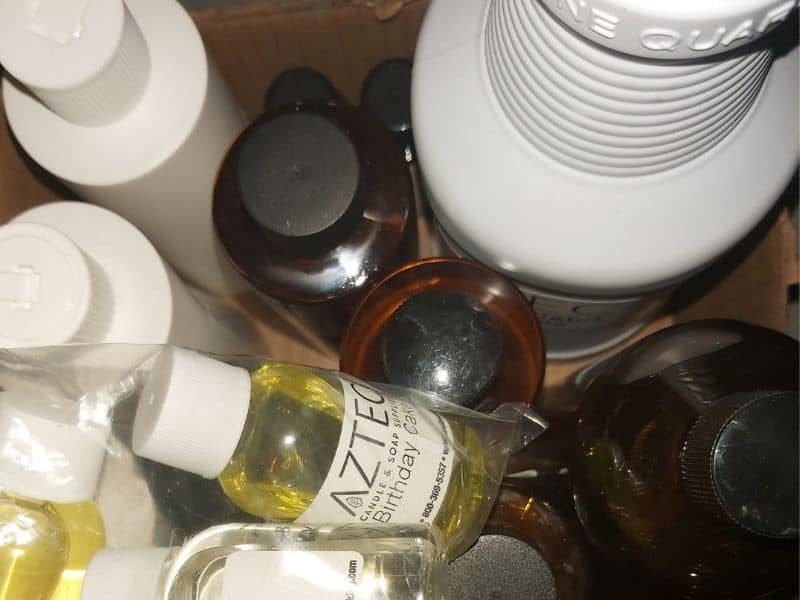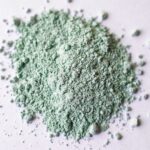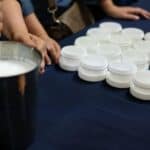Fragrance oil is what gives soap fragrance, but you can only use a certain amount or it will start to impact the soap’s ability to harden and its overall quality. So, how much fragrance oil can you add to melt and pour soap?
You should use between 0.5% and 3% fragrance oil in melt and pour soap. Any more than that, and the fragrance oil could start to overpower the soap, making it less desirable to use and leaving the soap feeling greasy.
How Much Fragrance Oil Can You Use?
MP Soap uses a common fragrance oil consumption rate of 3%. You may use 0.4 oz. of essential oil. However, you should be aware of the IFRA guidelines, as they may affect the amount of smell or essential oil that can be used in a brand.
IFRA is a self-regulatory trade organization that tells you about usage safety requirements for materials containing fragrance or essential oils in collaboration with the company’s scientific center RIFM.
IFRA uploads its standards every year depending on sound science. Lavender oil will be safe to use close to 30 percent in soap, according to IFRA.
For novices, melt and pour soap will be a great choice. It’s as simple as melting the premade base, adding the favorite colors and fragrances, and pouring it into a mold.
After you’ve mastered the basics, try out more advanced methods like layers and swirls.
Follow these three measures when using essential oils:
Step 1: Calculate the item’s usage rate. Fragrance oils or essential oils are used at a rate of 3% in MP Soap.
Step 2: Find out what the IFRA’s maximum usage rate is for the essential oil you wish to use. Keep in mind that the IFRA value always takes precedence over the item usage rate.
Step 3 – Just before pouring, add to the molten state base at a temperature under 140 F.
Changes in Color
It’s crucial to keep in mind that some essential oils can change the color of the soap. Vanilla fragrance oils can convert the soap into a variety of brown colors, from creamier texture to dark brown.
The amount of vanilla in every fragrance oil will tell you how much vanilla is in the fragrance.
A natural tint can be found in certain essential oils. Patchouli oil is dull and can make the soap yellow tinted. The color is often so diluted that it does not show up in the soap, but it does happen occasionally.
Always make a small batch of tinted essential oils before using them in a larger batch.
What Amount of Melt or Pour Soap Will You Require for Your Mold?
You’ll need 31 grams of soap for every ounce of soap in the mold by volume. If your soap mold holds 16 ounces, you’ll want 496 g of soap.
This will depend on the volume of the soap you’re making. When compared to the large soaps, tiny soaps will need less time to make. Just ensure they’re completely hardened before removing them. You should be able to sense the mold no longer being hot to the touch.
Although you should be capable of holding your molds inverted and gently pushing, they do get trapped occasionally. If you put the soaps in the fridge for a short time, you must be able to remove the soap with ease.
What Is the Best Way to Remove Fingerprints from Melt or Pour Soap?
When extracting the soaps from the mold, it is possible to transmit a fingerprint. Simply dampen a swab with rubbing alcohol and lightly clean the fingerprint. As you do it, it should start to fade.
What’s the Deal with the Melt or Pour Soap Sweating?
Your soap may sweat for a variety of reasons. For starters, it may be because you used too much oil. The soap can retain so much oil before it starts to leak out and form particles on the surface.
Most of the time, it’s because the soap is squeezing dampness from the air. Because the soap base contains vegetable glycerin, which is a humectant, it will attract moisture. Even though this is beneficial to the skin, it may cause the soap to sweat.
The latter can be avoided by encasing the soap when it comes out of the mold. It won’t be able to draw moisture this way. The hot process is another way of making soap. This method will use a heat source to accelerate the saponification reaction.
To heat the soap mix, you can use a stovetop. Allowing them to cure for a week will result in harder, gentler bars.
How to Avoid Soap Scent Fading?
It’s impossible to forget the first time you sense a fragrance straight from the bottle. A scent can instantly motivate you to create new designs, colors, and ingredients for the next soap formula.
However, the fragrance or essential oils in melt and pour soap can disappear or change over time.
The amount of fragrance oil used in the formula has a big impact on how long the scent lasts. With regulations in mind, you can include .8 ounces of oil for every pound of soap for a strong aroma. You can use.25 ounces of oil and .5 ounces of oil for every pound of melt and pour soap.
This quantity will change depending on the scent you choose.
Fragrance oil should be measured by weight instead of volume. Color, mass, and flash point are essential things that differ from one smell to the next.
It will be impossible for soap makers to keep track of all the distinct characteristics of every fragrance. Fortunately, there is only one feature to remember: weight.
To begin, find what proportion of fragrance oil you’d like to use. The mean usage rate is 6%.
Here’s a quick formula:
(oz of wax used) x (percentage of fragrance oil desired) = (oz of fragrance oil required).
Why Do the Cold Process Soap Have Lye Pockets?
If too much lye is utilized in cold process soaps, lye pockets will form. It can be due to a poorly formulated formula, an oil being left out, or the lye mixture not being fully mixed. Now, when you’re adding the fragrance, ensure you’ve thoroughly blended it in.
When the fragrance isn’t blended in, pockets of natural fragrance or division will show up in the soap. When introducing colorants or dyes to the soap, make sure to fully incorporate them.
The color will not be fully implemented into the soap if it is not blended. If you don’t fully mix your color, you may end up with speckles throughout the soap instead of a uniform color.
Frequently Asked Questions
The maximum fragrance oil that can be used in melt and pour soap is around .8 ounces per pound of soap. However, this amount may change depending on the scent you choose.
It may be because you used too much oil. The soap can retain so much oil before it starts to leak out and form particles on the surface. Most of the time, it’s because the soap is squeezing dampness from the air.
Conclusion
Adding fragrance oil to melt and pour soap is a great way to give your product a boost of scent.
However, it’s important to use the right amount in order to avoid fragrance fading and other problems.
By following the tips in this article, you can create a soap that smells great and looks beautiful too.






